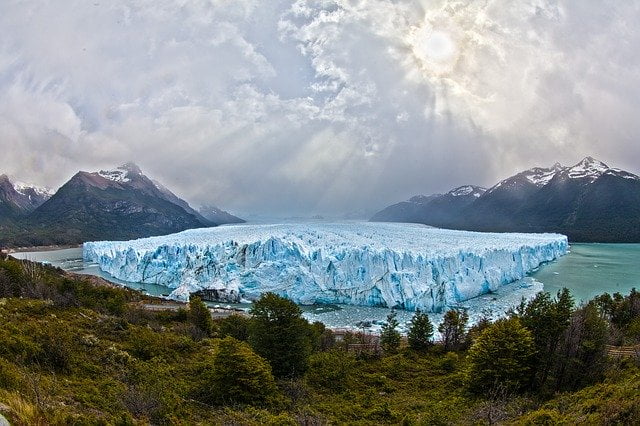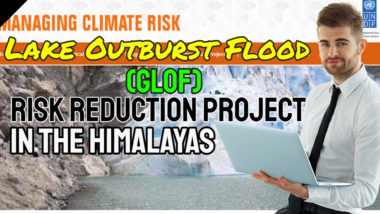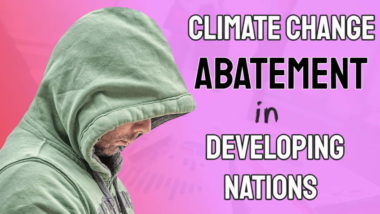Undoubtably, most climate changes over the last 100 years have been due to global warming, but other events influence climate change as well. One such is volcanic activity when eruptions and major events occur. We decided to use this article to describe first those climate changes recognised as being invoked by temperature rises, and second Climate Change Due to Volcanic Activity.
Climate modification is a multi-faceted and complex subject. In this article, we take a look at the relationship between climate modification and volcanoes.
Climate Changes Due To Global Warming
There is no doubt that the earth's climate is constantly changing. Some people feel that it is part of the normal cycle of events on this planet. Yet, most scientists agree that there are drastic changes occurring that are due to unnatural global warming.
The weather is getting decidedly warmer. For the most part, the United States has already warmed up some. In some places, the average rise in temperature is around four degrees Fahrenheit. However, all the states show some degree of warming.
 The first and second warmest years on record were 1998 and 2006, respectively. In fact, every year from the first to the second warmest years, ranked within the warmest 25 years in the US. In 2006, the annual average temperature was 55 degrees Fahrenheit. Recent warm years point to a climate change being brought on by global warming.
The first and second warmest years on record were 1998 and 2006, respectively. In fact, every year from the first to the second warmest years, ranked within the warmest 25 years in the US. In 2006, the annual average temperature was 55 degrees Fahrenheit. Recent warm years point to a climate change being brought on by global warming.
Climate changes due to global warming can be seen in the prevalence of drought. Years are becoming drier in recent decades due to global warming. This is caused by the heat that is building up around the earth's surface. Excessive evaporation intensifies drought even more during the spring and fall.
 Global warming has upped the level of drought. A major drought in the US lasted from 1999-2002. There were only two other droughts in the last forty years that were so widespread and devastating. Crops were damaged or would not grow at all, thus shortening the food supply.
Global warming has upped the level of drought. A major drought in the US lasted from 1999-2002. There were only two other droughts in the last forty years that were so widespread and devastating. Crops were damaged or would not grow at all, thus shortening the food supply.
There have been more and more frequent droughts in the West in recent years. The last 30 years in particular have seen numerous droughts. These droughts have spawned wildfires that set new records in 2006 for number of fires and of acres burned. Further proof of global warming is seen in these destructive wildfires.
While the overall effect of global warming is heat followed by drought, there are still storms. Since global warming energizes the atmosphere, these storms will be different. When all is going well, a gentle rain will soak into the earth gradually, causing no more than a minor inconvenience to people.
Because of global warming, storms are becoming more destructive. While there have certainly been droughts, rainfall totals have risen in the past century. This surprising fact is due to the fact that when the rain comes, it comes in rapid downpours. The sky opens up and dumps water on the earth very quickly in many cases. This is followed by dry periods.
The number of times it rains in a year has increased during the last 50 years due to global warming.
What is more, global warming is causing storms to intensify. Storms which would have been ordinary thunderstorms in the past are morphing into raging tempests. Hurricanes have been rated higher in recent years as global warming affects their intensity.
Global warming is responsible for many climate changes. Often, people cause the increase in global warming that precipitates these changes. If people could make it a common goal to cut down on activities that promote global warming, the earth would be a much more stable environment.
Climate Change Due to Volcanic Activity
The climate modification debate is a nasty one. Parties pick their positions, dig in and refuse to listen to the rants of the other side. Lost in the yelling is the simple fact that climate modification is a natural phenomenon to some extent. For proof, we need merely look at the materials kicked out by volcanoes.

It is an undeniable fact of the earth record that volcanoes have changed the climate during certain periods. Small explosions don't have much impact, but large explosions send massive amounts of material and gases into the atmosphere. The gases include carbon dioxide, the ultimate bugaboo greenhouse gas. However, beyond these gases, volcanoes can kick out so much debris and ash that the material in the atmosphere can actually block out the sun or reduce the warming effect.
Mount St. Helens is the most studied and well known recent eruption. Unless you have been meditating in a cave for the last 20 years, you know that the volcano exploded on May 18, 1980. The eruption was powerful enough to flatten everything for 17 miles, immediately turning 10 million trees into so much firewood. The huge volcanic ash cloud stretched halfway across the United States, but barely had an impact on global temperatures.
In contrast, the eruption of the El Chichon volcano in 1982 had a measurable climate impact. El Chichon is located in Mexico and was a much smaller eruption than Mount St. Helens. Still, the average temperature around the globe cooled by one degree. What scientist learned is the climate modification impact of volcanoes is highly dependent on the type of explosion. The materials from Mount St. Helens fell out of the atmosphere quickly, while El Chichon belched enormous amounts of sulfur that remained in the atmosphere for much longer.
One of the problems with climate modification is it occurs over a relatively long period of time. Since we started paying attention to the situation, we have not had a chance to see the impact of a major eruption. The stuff we see on television is really small potatoes compared to historically eruptions of note. For example, Mount St. Helens threw roughly a half a cubic mile of material into the air. In 1815, a volcano in Indonesia belched 24 cubic miles of material into the atmosphere. Obviously, one has to imagine it impacted the climate of the earth.
Is there a relationship between climate modification and volcanoes? Undoubtedly. From what we see, however, the relationship is generally of a short duration and not an explanation for the rising temperatures we are seeing currently.
Best Low Carbon Farming Practices & Techniques
Farmers are turning to low carbon techniques like no-till farming and precision agriculture to combat climate change. These practices not only reduce emissions but also improve soil health and farm profitability, offering a resilient future for agriculture as weather patterns grow increasingly unpredictable…
Which Gas is Produced from Landfill Waste: The Gas that Trash Produces…
Discover which gas is produced from landfill waste and understand its environmental impact and potential energy use. Explore landfill gas management.
Biogas Innovators Take Centre Stage: The World Biogas Awards 2024
Since 2011, a prestigious ceremony has been quietly moving the world on a path back to sustainability – not with flashy gadgets or social media trends, but with something far more fundamental: biogas innovation. The annual AD and Biogas Industry Awards, held in Birmingham, UK, celebrate the brilliance behind this renewable energy source, recognizing the […]
Climate Change Management Strategies: A Comprehensive Guide
Climate change poses significant challenges to the planet and its inhabitants. To address these challenges, it is essential to adopt comprehensive climate change management strategies. These strategies aim to mitigate greenhouse gas emissions, adapt to the impacts of climate change, and build resilience to future climate-related risks. Purpose of Climate Change Management Strategies The purpose […]









You say those that disagree with idea of AGW are “some people” and then you say “most scientists” to the other side of that argument. That’s a character flaw, pal. There are plenty of scientists that understand that our weather is linked to tectonics.
100% of any non-paid off scientist is going to submit that the Earth is not in stasis and Denver was once under an ocean and south of the Equator.
If change is inevitable your political movement will die with it. New York WILL be under a sea one day and no power or authority of man will ever change that. The global warming idiots are political and geology is real.